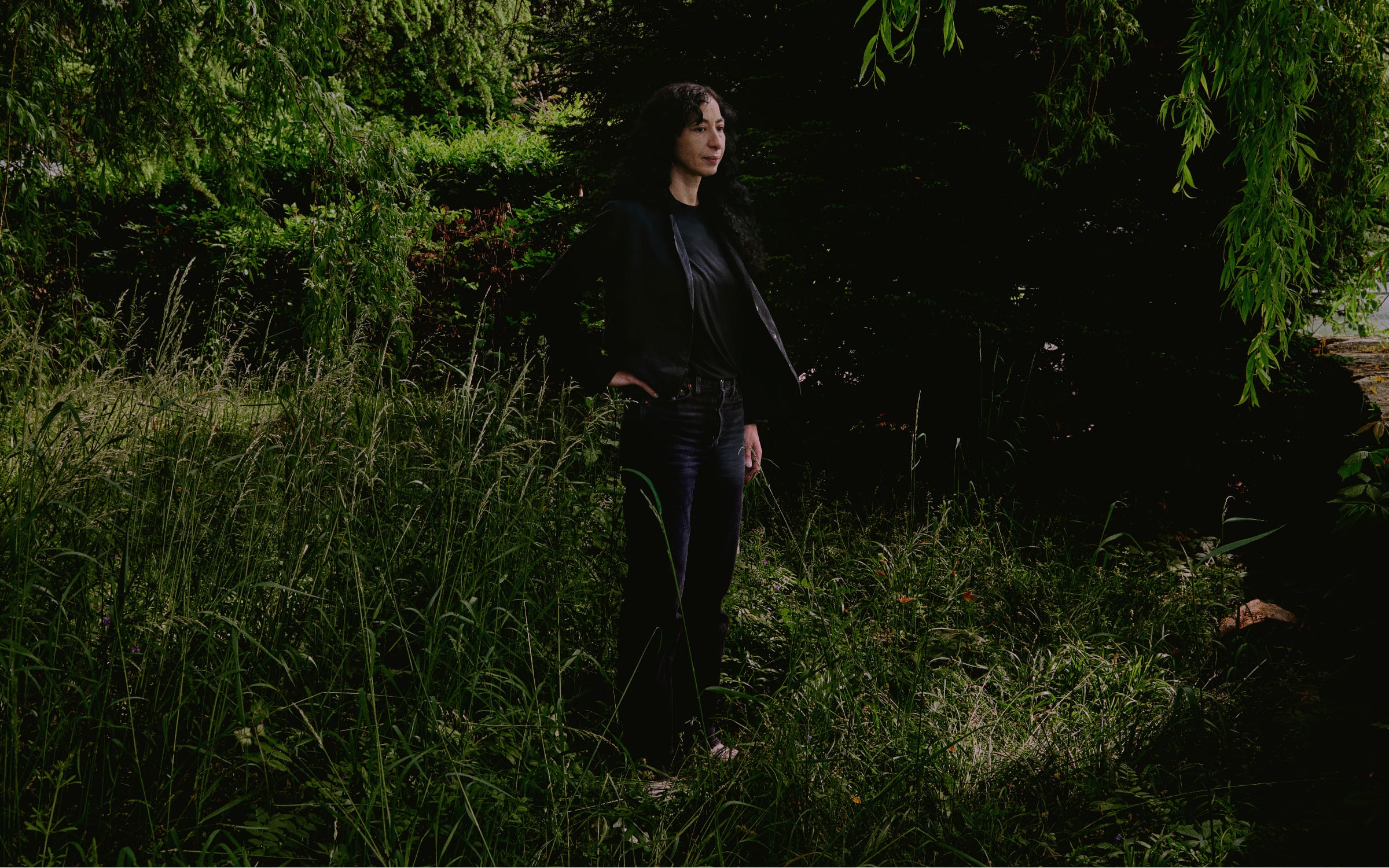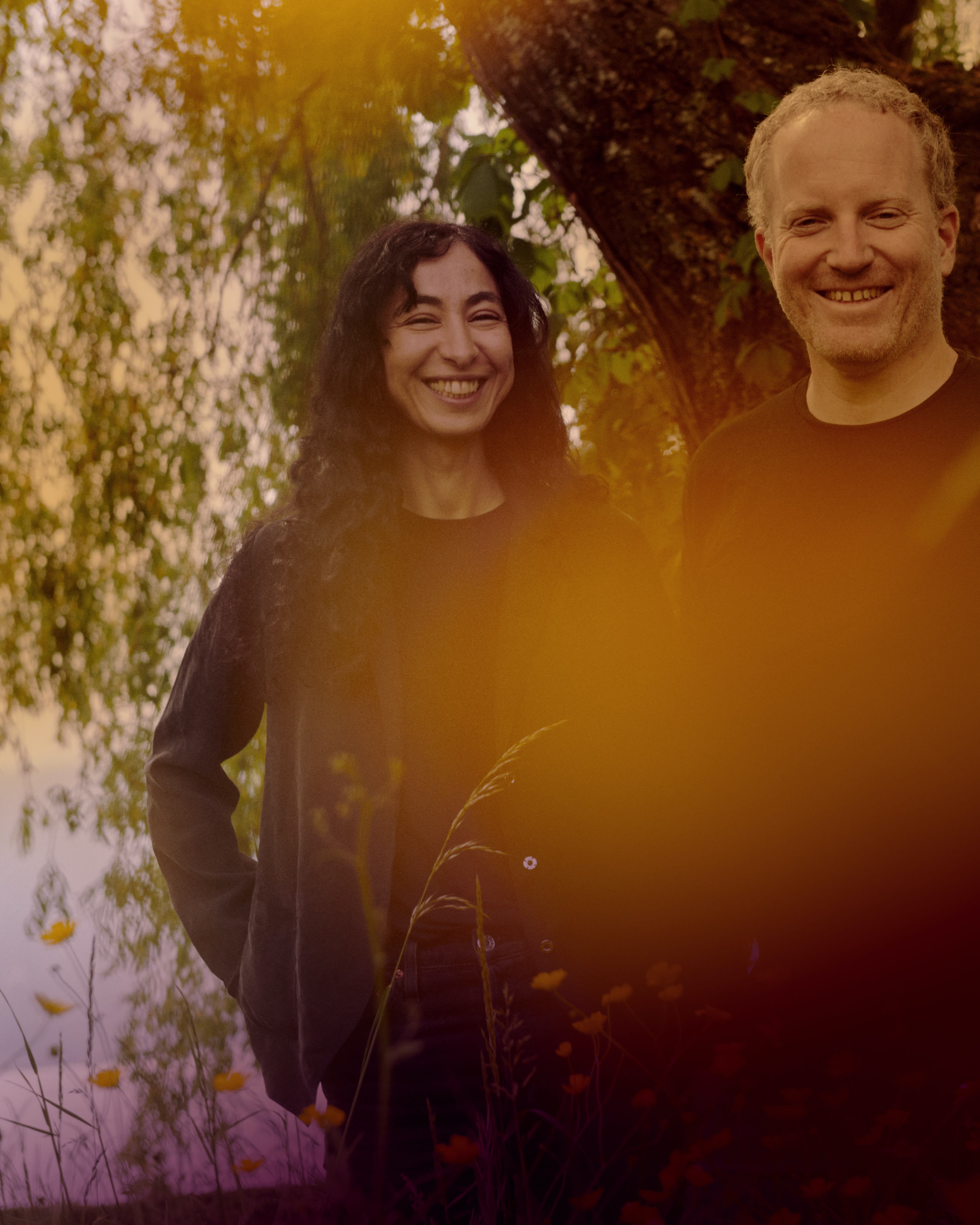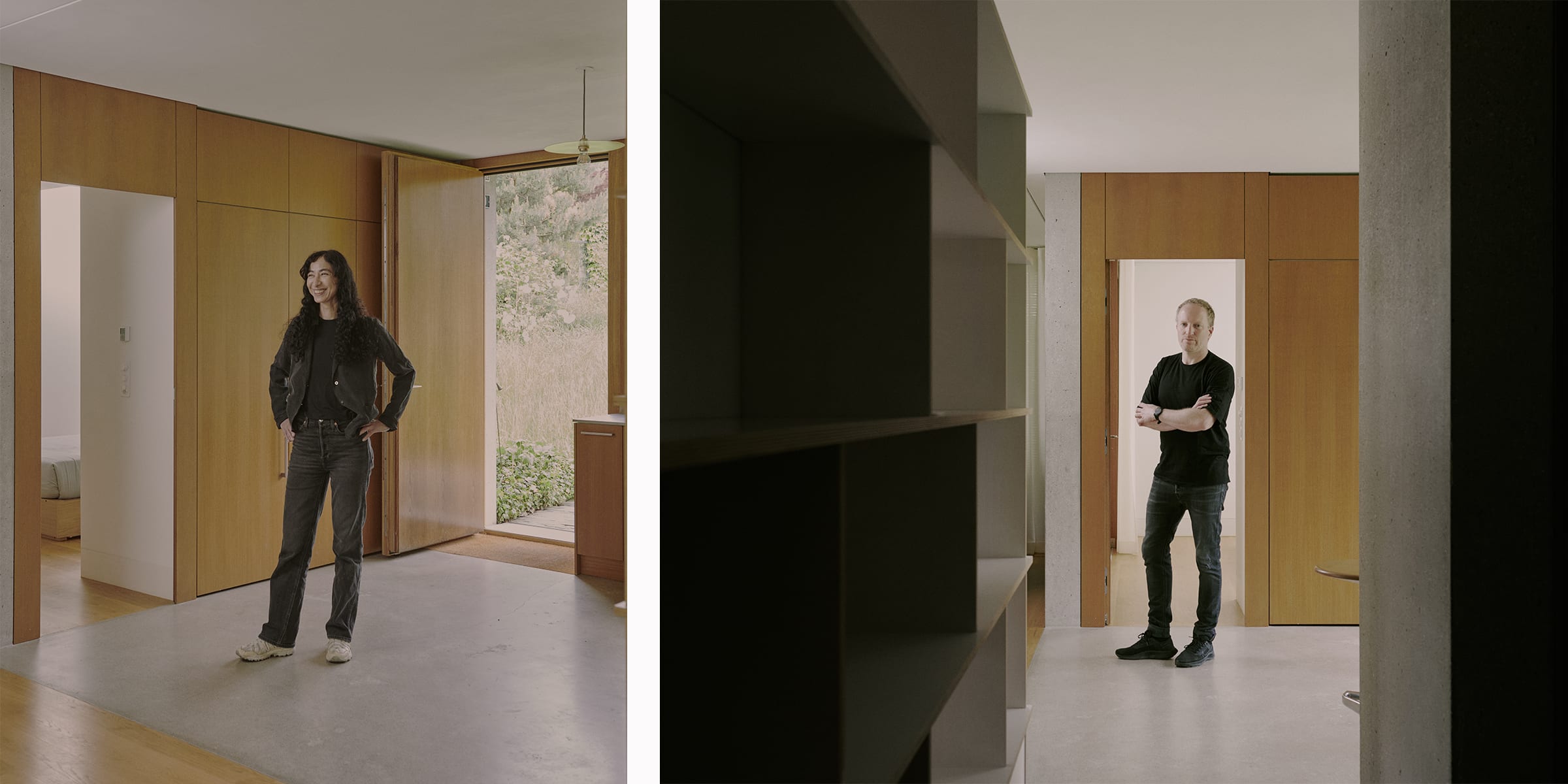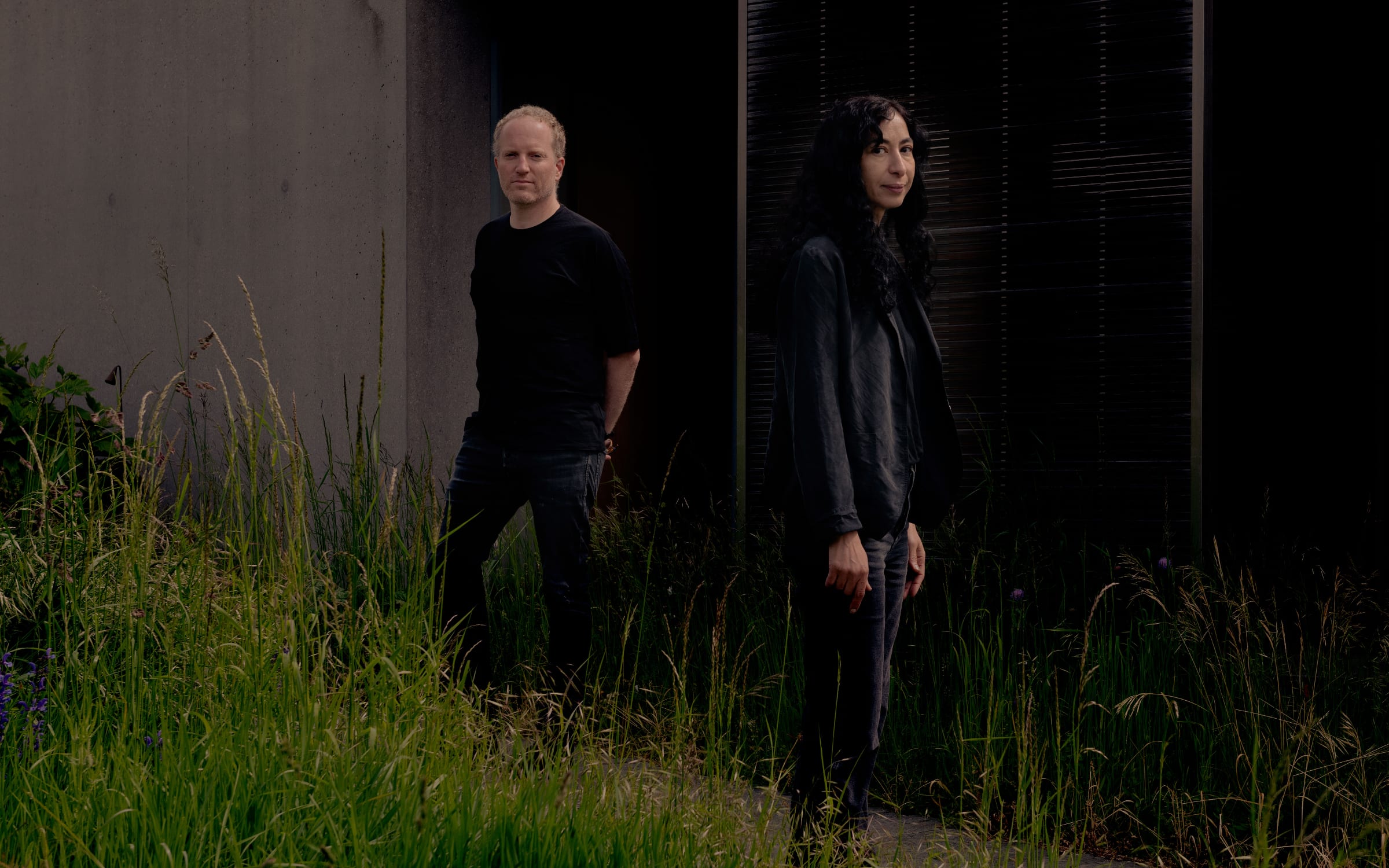Latifa Echakhch once said she wanted visitors leaving her pavilion at the Venice Biennale in 2022 to feel the same way they might after a rock concert. And indeed, her sculptures of charred wood and debris bathed in orange light gave the distinct impression of arriving after the fact – hours or perhaps minutes after a momentous and mysterious event had taken place. Throughout her career, the Moroccan-born, Swiss-based artist has consistently sought out instances of cathartic collectivity that manifest as thoughtful rebukes to today’s emphasis on the individual. Her exhibitions often play with harmonies and dissonance, with the feelings associated with expectation, fulfilment, and disappearance. Echakhch is driven by the necessity to engage with the contradictions and to counter the prejudices that shape our society. She is interested in the redemptive possibilities of the transmission of emotions, and in the capacity of catharsis and empathy to cross lines of identity, forming unpredictable, temporary, ideal, and even utopian moments of community.

How to enable collective experience to surface without reinforcing divisions? How to conjure an ‘us’ that does not require a ‘them’? How to generate an atmosphere, without removing the space necessary for critique? Over the last few years, Echakhch has attempted to address some of these questions by engaging with musical and theatrical avant-gardes adjacent to the visual arts. And she has employed strategies of invitation and creative appropriation to articulate performative scenarios without ‘owning’ them, as either author or director.
For this year’s Art Basel Messeplatz project, curated by Samuel Leuenberger, Echakhch has teamed up with Luc Meier, the director of La Becque residency in Southern Switzerland, to erect a deconstructed stage – or rather, several stages of different sizes. Together, these will constitute a sculptural space that is both a site for performances – featuring the likes of musician Rhys Chatham, and visual artists Robert Longo and Naama Tsabar – and evoke our collective memories of ruins. Some of the plates will be placed vertically, to form walls, while part of the lighting rig will be brought down to the ground, in a way that recalls minimalist sculpture. These stages – which can be read as scenography, obstruction, or sculpture – are meant to simultaneously fulfil and subvert the romance of live performance. Through their fractured geometry, and their animation by musicians, they extend the art fair into the fabric of the city.
A few weeks before the inaugural performances on June 13, Echakhch and Meier sat down with Zurich-based art critic Adam Jasper to discuss performance, collectivity, and the importance of being present.

Adam Jasper: Did the idea for a stage come before the idea of inviting musicians to play on it?
Latifa Echakhch: I wanted a scenario resembling a music festival, in which you have several stages – big and small – and crowds meandering from one to the other. My idea was to have two stages collide in the center of Messeplatz and create a kind of chaotic ensemble. This landscape is what we invite musicians and performers to make theirs. When they play, they not only make it busy, and real, but they also enact metaphors of time. Their performances will give us access to, and deconstruct, a kind of romanticism.
Luc Meier: The idea is that the audience will encounter this stage in an ambiguous state – it’ll look like it’s either being built or already being demolished. The musicians we’ve invited to perform have asked, and continue to ask, fundamental questions about how sound and music emerge. And they also test what constitutes a collective concert experience.
LE: Take Leila Bordreuil. The tools she uses to augment her cello – an amp, some of the effect pedals – are at the very least bashed up, if not broken. She tries to find a way to play with them – with their imperfections. It’s rough, strong, but also very beautiful music. When she told me she worked with broken instruments, I could relate. I also use broken materials in my own work.
I like fragility because it’s paradoxically strong. The fragile object exists, and its existence, or rather its perseverance, comes out of a hidden reserve of strength. Our society is obsessed with perfection, now more than ever. Fragility and imperfection are important points of resistance, around which artists can rally.
How are you handling the fact that the performers will play in front of a busy, circulating public? Performance is normally described in terms of concentrating attention, but this will require at certain moments a diffusion of attention.
LM: Crowd flow on Messeplatz is something we’ve considered when scheduling the concerts. The musicians will not only play for fairgoers but also for commuters stepping on and off trams, and families exiting the Circus Knie at the other end of the plaza. For the musicians on stage in such a busy environment, there is a strong element of exposure, which they might want to play with. Either blending in to the point of disappearance or making a statement by imposing their will (and volume).
LE: It’s a diffusion in time, but it’s also a diffusion in space. When you have a performance on a stage, you normally have a frontal view of it. Here, the stage is broken, and you can see the performers from all directions.
LM: The crowd will be everywhere and mostly transient, and up to a certain point, mostly inattentive. We’ve warned the performers: ‘this may be your worst nightmare.’ In a normal concert setting, you know where your crowd is (usually in front of you) and your ‘adversaries’ are easy to identify: that one person who can’t stop coughing, that one guy by the bar at the back of the room who can’t stop talking. And now you potentially have a plaza full of them. It’s tricky, but it also forces you to reconsider your centrality as a performer and the codes of your stage presence.

How did you find the musicians?
LM: We both listen to a lot of ‘weird’ music, and have done so for a long time. Through constant practice, you develop a certain discipline of listening. You also accumulate references, and draw the links between them. Some of these recordings and references suddenly turn into actual connections, into personal friendships, and sometimes close collaborations. Some of the friendships involved in this project go back more than 20 years.
LE: And then there are other artists involved whom we don’t know personally yet – that also makes us happy. When we started discussing having actual concerts on the stage, the first musician who came to mind, along with Leila Bordreuil, was Oren Ambarchi. His latest album, with its guitar and rhythm patterns, was just out and was a constant companion while I was gardening and thinking about the project.
I love the collaboration between Rhys Chatham and the artist Robert Longo. Once we knew we could get them to perform together again, I was thinking back to all the stories from the Kitchen in New York [in 1971, Chatham was the first music director of the legendary NY experimental art space] and all these really lively and important connections between musicians and the visual arts at that moment in New York. And I thought, this is something we must reactivate.

Is it important that the performers are physically present on stage?
LE: I think it’s a way to remind people that music is from the body. When you see a musician playing, you can imagine yourself in their place. It’s something that you can mirror.
LM: There’s been a growing disembodiment of music through commercial streaming platforms. With this project, we’re welcoming music from parts of the arts scene that are perennially underfunded but extremely generous, where the people involved will always point you to yet another artist or another recording, to make themselves and others available?
This human and social factor will also be an element that features strongly in some of the performances. For instance, we’ve invited Alvin Curran, the American composer who’s been in Rome since the mid-1960s. He was part of some of the really fundamental improvised music collectives at that time (with MEV / Musica Elettronica), during a period of tension when collective music-making and political action were intrinsically linked.
Another good example is Chatham’s Guitar Trio, a very simple piece – one guitar chord and basic chug. But there are different ways to play this simple thing collectively, to generate overtones and other interactions. And the cast of participants, most of them recruited locally and generally not ‘scene experts,’ changes every time. It’s a contingent gathering of musicians around a very simple common endeavor, for a strong collective moment.
LE: I make sculptures, I’m not a performer. I’m more of an introverted artist. But during all the research I did leading up to the Venice Biennale project in 2022, I started to talk to and work with many musicians. I discovered that we have many things in common, even if we don’t use the same materials or tools. The things I put on display in my installations are a polyphonic weave of feelings that could be contradictory: joy, sadness, expectation, disappointment – all very common. This possibility of direct emotional experience is something music offers: emotions are transferred and felt as a kind of endless braid.
Latifa Echakhch’s Messeplatz project will be on view during Art Basel in Basel 2023. Discover the full program here.
Latifa Echakhch is represented by Dvir Gallery, Paris, Brussels, and Tel Aviv-Yafo; Pace Gallery, New York, Geneva, Hong Kong, London, Los Angeles, Palm Beach, and Seoul; and kaufmann repetto, Milan and New York.
Luc Meier is the director of La Becque | Artist Residency in La Tour-de-Peilz, Switzerland.
Samuel Leuenberger is an Independent curator and the founder of the non-profit art space SALTS in Birsfelden and Bennwil, Switzerland. He is also the curator of Art Basel's Parcours sector. Prior to curating Latifa Echakhch and Luc Meier's project, he co-curated with Giovanni Carmine the Messeplatz presentation in 2021, which featured Cecilia Bengolea and Monster Chetwynd.
Adam Jasper is an art and architecture historian based in Zurich. He recently coauthored the book Neighbours for the Swiss Pavilion at the 2023 Venice Architecture Biennale (Zurich: Park Books, 2023), and coedited the book Retail Apocalypse with Fredi Fischli and Niels Olsen (Zurich: gta verlag, 2021).
Photographs by Matthieu Croizier for Art Basel.
Published on June 6, 2023.